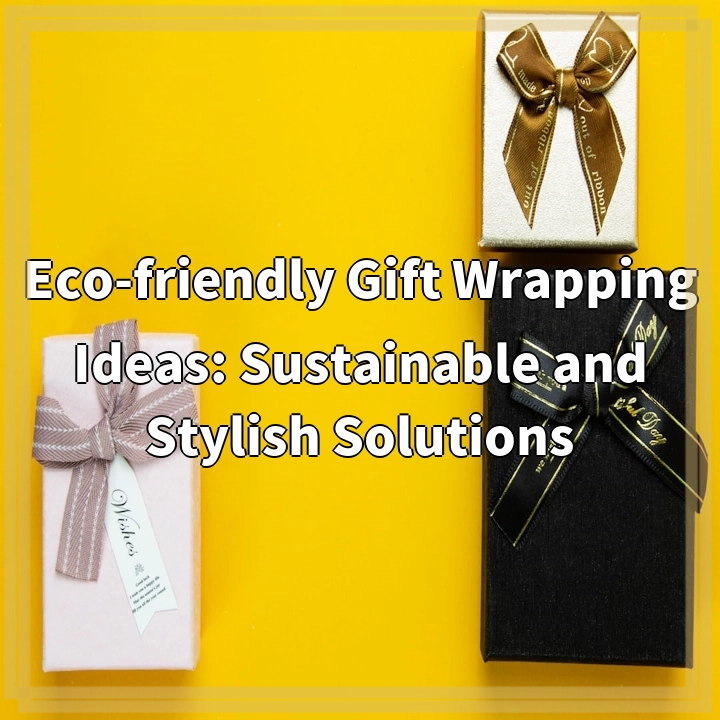
What it is:
Gift wrapping is the final touch that adds excitement and anticipation to any present. However, traditional gift wrapping practices often generate excessive waste and contribute to environmental issues. Eco-friendly gift wrapping provides sustainable and stylish alternatives that minimize the negative impact on the planet.
Real-world problems:
1. Excessive paper waste: Traditional gift wrapping techniques involve using large amounts of wrapping paper, which leads to unnecessary waste. The production and disposal of this paper contribute to deforestation and the release of greenhouse gases.
2. Non-recyclable materials: Many mass-produced gift wrap options are laminated or contain metallic substances, making them non-recyclable. These materials often end up in landfills, where they contribute to the accumulation of non-biodegradable waste.
3. Single-use mindset: Conventional gift wrapping encourages a culture of single-use disposable items. The wrapping paper, ribbons, and bows are often discarded after a single use, resulting in a significant amount of waste.
4. Hazardous dyes and inks: Some wrapping papers use toxic dyes and inks, which can be harmful to both human health and the environment. These chemicals may leach into the soil and water systems when the gift wrap is disposed of improperly.
5. Plastic-based accessories: Many conventional gift wrappings rely on plastic-based accessories, such as ribbons and tape. These items are made from non-renewable resources and add to the growing problem of plastic pollution.
Recognizing these real-world problems, eco-friendly gift wrapping offers sustainable and stylish solutions that allow us to celebrate special occasions while being mindful of the environment. By adopting eco-friendly practices, we can mitigate the negative impact of gift wrapping and pave the way for a more sustainable future.

Solutions to Eco-friendly Gift Wrapping:
1. Use recycled and recyclable materials: Opt for gift wrapping papers made from recycled materials or choose papers that are easily recyclable. Look for certifications like FSC (Forest Stewardship Council) to ensure sustainable sourcing.
2. Reusable alternatives:
Explore reusable options like fabric gift wraps, such as furoshiki, which originated in Japan. These versatile cloths can be tied in various creative ways and reused for multiple occasions.
Consider using scarves, tea towels, or bandanas as gift wraps. Not only are these options eco-friendly but they also provide an extra gift for the recipient.
3. Natural embellishments:
Avoid plastic-based ribbons and bows. Instead, opt for natural alternatives like twine, jute, or raffia. These materials are biodegradable and add a rustic charm to your gift.
Explore using dried flowers, leaves, or pinecones as unique and environmentally-friendly decorations for your wrapped gifts.
4. DIY gift wrap:
Create your own personalized gift wrap by decorating plain kraft paper or using newspaper, old maps, or sheet music. This adds a touch of uniqueness and reduces waste.
Embrace your creativity by incorporating stamping, hand-drawn designs, or even eco-friendly paints made from natural or vegetable-based pigments.
5. Gift bags and boxes:
Consider using reusable gift bags or boxes made from recycled materials. These can be used multiple times and eliminate the need for wrapping paper altogether.
You can also repurpose items like shoeboxes or mason jars to create unique packaging options.
6. Spread awareness:
Encourage friends and family to join in your eco-friendly gift wrapping efforts. Share information about the environmental impact of conventional gift wrapping and showcase the sustainable alternatives available.
By implementing these solutions, we can significantly reduce waste, minimize our environmental footprint, and inspire others to adopt eco-friendly gift wrapping practices.















